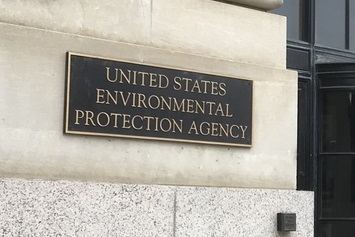The environmental ill will between the U.S. Environmental Protection Agency (EPA) and the nation’s most populous state, California, has spilled over from the Clean Air Act (CAA) to the Clean Water Act (CWA) and Safe Drinking Water Act (SDWA).
The latest volley by the EPA implicates what is not typically identified as an environmental issue—the homeless populations of Los Angeles, San Francisco, and other major California cities. According to a four-page letter EPA Administrator Andrew Wheeler sent to California Governor Gavin Newsom, Los Angeles and San Francisco are facing “significant public health concerns” because of piles of human feces on sidewalks and streets.
“The EPA is concerned about the potential water quality impacts from pathogens and other contaminants from untreated human waste entering nearby waters,” writes Wheeler.
The letter also lists multiple exceedances of contaminant limits in state-issued National Pollutant Discharge Elimination System (NPDES) permits, an inadequate sewage treatment program in San Francisco, and violations of SDWA contaminants.
Wheeler writes that he expects California to provide him with a remedial plan addressing these issues no later than 30 days after the September 26, 2019, date of the letter.
GHGs and Fuel Economy
Wheeler’s letter comes only weeks after the conflict between the EPA and the state over vehicle greenhouse gas (GHG) emissions and fuel economy reached a new high in rancor. First, the EPA notified the California Air Resources Board (CARB) that it may be operating outside the law by striking a deal with four automakers that agreed to pursue fuel economy standards that are more stringent than federal standards issued by the Trump administration. Also, news media reported that the U.S. Department of Justice is investigating whether two of the automakers are illegally manipulating the auto market. President Donald Trump became personally involved in the dispute when he issued several tweets contending that the effect of the California/automaker deal was to increase the cost of cars and decrease the safety of drivers and passengers.
A week later, the EPA published a final rule revoking California’s waiver from federal GHG emissions and fuel economy standards. Under the CAA, California may petition the Agency for the waiver, which allows the state to promulgate its own vehicle standards to address its unique air pollution problems. The long, unbroken history of California receiving the waiver ended with the revocation. California and other states that adopted the California standards promptly filed suit to block the EPA’s action.
Combined Sewers in San Francisco
“The state’s lack of action in response to the homelessness crisis and San Francisco’s discharges of inadequately treated sewage prompted the EPA to review other programs administered by CalEPA [the California Environmental Protection Agency] for similar concerns,” Wheeler writes.
The letter goes on to note that San Francisco is one of the few major cities with sewers that combine stormwater and sewage flows that are not under a federal consent decree to meet the requirements of federal law. The letter acknowledges that the city has undertaken some measures to address the problem but is falling short of the billions of dollars needed to stop untreated and partially treated sewage from being dumped into San Francisco Bay. According to the letter, San Francisco treats combined sewer overflows to remove only floatables and settleable solids and does not perform biological treatment.
Regarding NPDES permits, Wheeler writes that the EPA is aware of 23 “significant instances” of discharges into waters of the United States that exceeded permit limits. In addition, the letter states that in the most recent reporting quarter of 2019, California had 202 community water systems with 665 health-based exceedances (e.g., for arsenic, lead, and disinfection by-products) that put the drinking water of nearly 800,000 residents at risk.
The EPA has granted California the authority to operate the NPDES program and oversee SDWA compliance.
‘Decisive’ Action Expected
“California has the resources to address these problems,” Wheeler writes. “Apart from the state’s significant tax base, California received more than $1.6 billion of federal funds to implement CWA programs in just the last five years. In addition, California received more than $152 million in categorical grants over this time to improve compliance with the CWA.”
“The EPA stands ready to assist California and CalEPA to protect the health and environment of Californians,” he adds. “However, it is time for the state to act decisively under its authorities to address the problems identified in this letter.”
The Sacramento Bee reported that, in response to the letter, a spokesperson for Newsom said Wheeler’s criticisms are not about clean air, clean water, or helping the state with homelessness.
“This is political retribution against California, plain and simple,” said the spokesperson.

